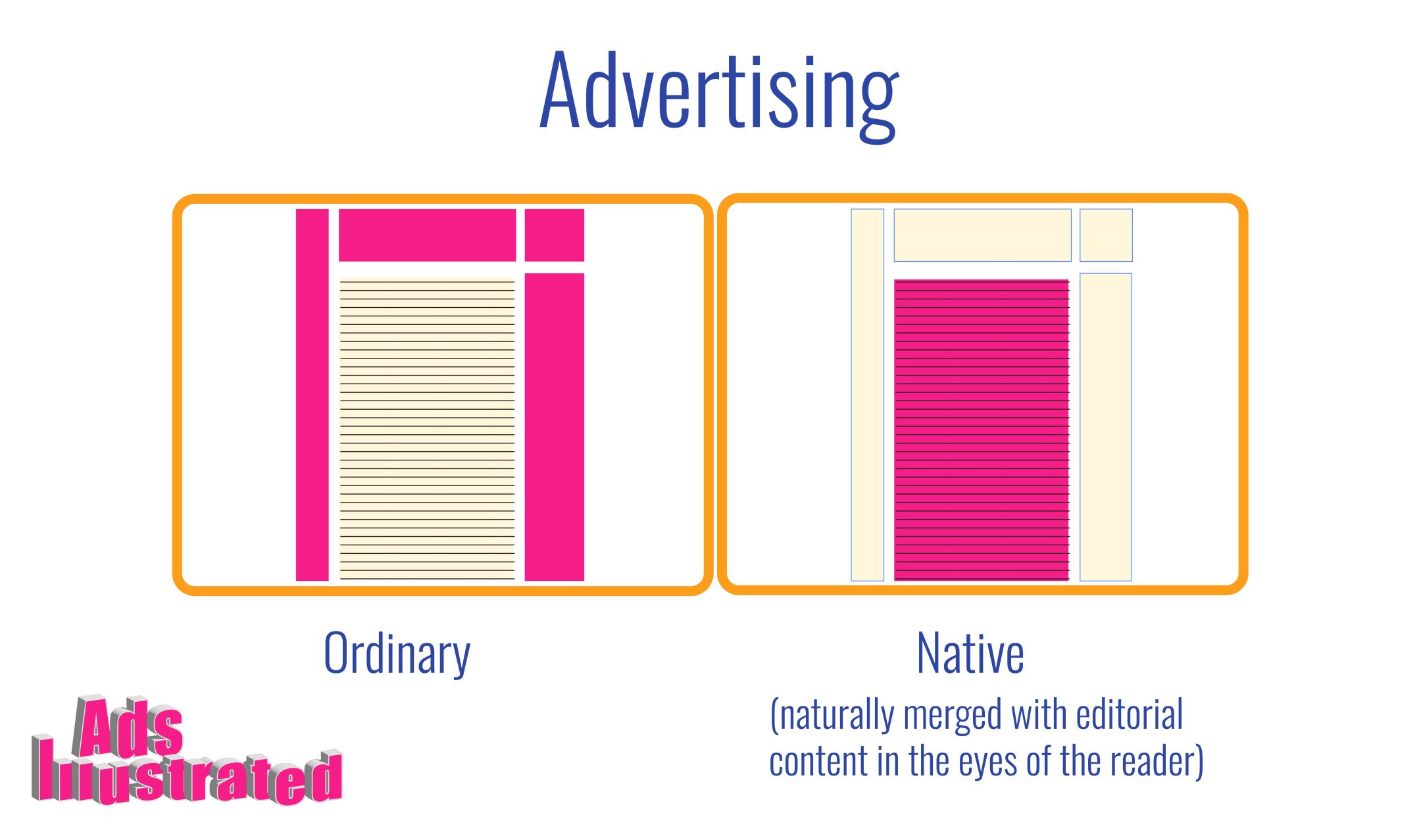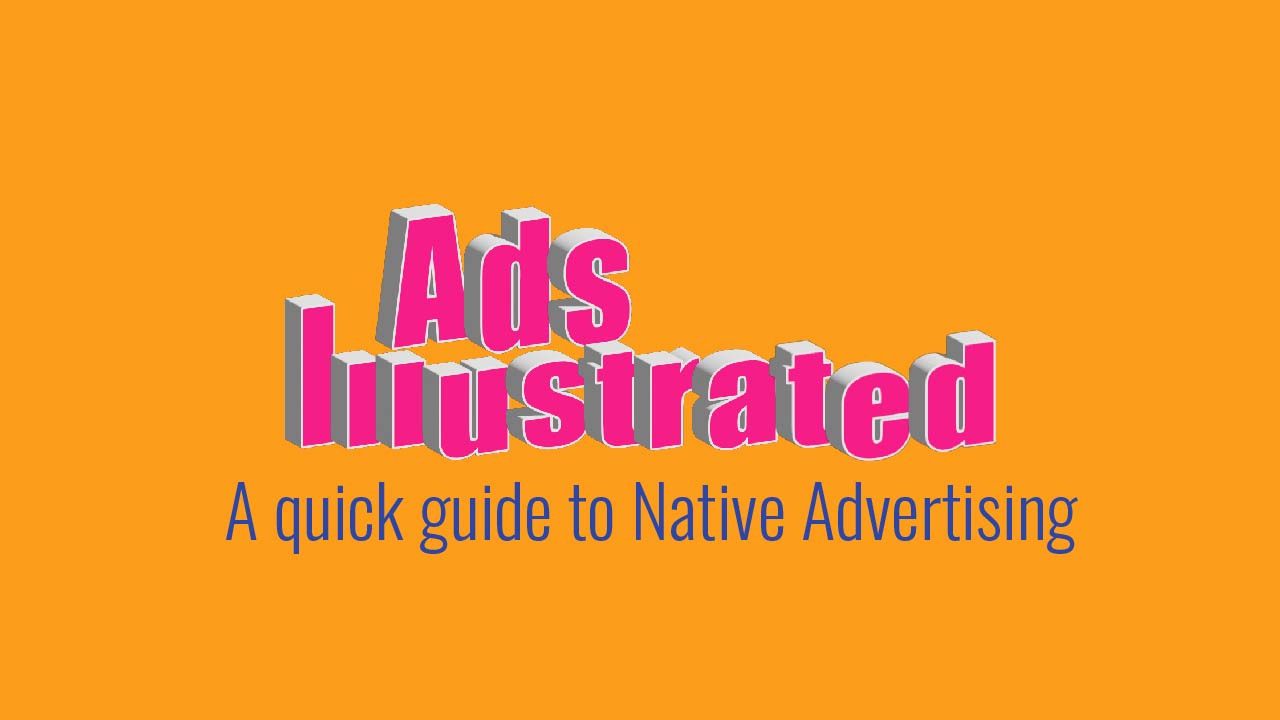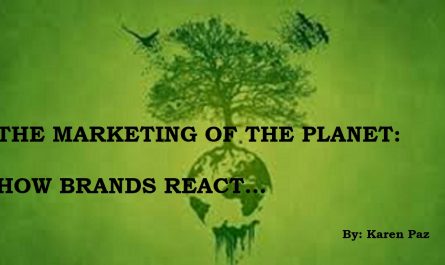Native advertising is one of the most discussed types of advertising of the last decade. Prefix “Native” is as attractive to advertisers today as “Social” was in 2010.
Today already one third of companies are using native advertising for branding campaigns, spending on it a fifth of all advertising budget**. Consumers perceive the format of native ads 53% better than banner ads***, and every third (32%) person is even willing to share such content.
So What does Native Advertising exactly mean?
Though it’s been many years since Native Advertising has appeared in the market, Interactive Advertising Bureau (IAB) notes in its research reports that among customers there is confusion in formats among themselves due to the relative novelty of the format and the lack of clear boundaries for this concept.
Worldwide understanding of its boundaries and typology is different. For example, at the American market, native advertising is a material which has a sponsor’s note on it. The Russian law does not have this term at all.
There is no given definition of Native advertising, but all world resources describe the same main unifying feature of this type of ad – a tendency to naturally merge with editorial content in the eyes of the reader.
Since none of the definitions I heard and read satisfied all known cases and manifestations of native advertising, I decided to look into the matter myself. I searched for many experts in Native Advertising, listened to many blogers and journnalists, who were pioneers in working with this type of ads and fianlly got my own understanding and typology, that I would share with my readers.
Finally. Native advertising is divided into two types:
1. Native formats.
2 Native content****.
In the first case, this type does not have most of the highly praised advantages of native advertising. Classifications of “native formats” and information on them abound. But in fact, all of them can be described as a banner shifted from the periphery of the user’s vision to the center. And even if it’s a video, the essence of that does not change*****.
In addition to a more convenient location and stylistic mimicry (fonts, sizes – everything is usually adjusted) the “native format” has most of the disadvantages of conventional online advertising:
- It also annoys people. And sometimes more, because of “Damn, I thought this was something interesting, not a damn ad.”
- It is also can be identified and cut by AdBlocks.
By the way, in 2020, more than a quarter of Internet users in Russia used ad blockers, so, along with “banner blindness”, which came as a result of getting used to such native formats, native content only deserves attention in native advertising, which I will discuss in my future posts. Stay tuned!
Sources that I rely on in my personal reasearch on Native Advertising:
* Enders Analysis&Yahoo, 2020.
** According to the Russian interactive advertising bureau IAB.Russia,
*** According to IPG&Sharethrough research (IPG&Sharethrough, 2015).
****Native Advertising — from W to F. Ashomko, 2016. Medium




Interesting. Liked it! Look forward to the next series of Native Advertising.
Thank you Gavhar! It’s on the way already %)
I did not know it before , thank you Olga
You will learn even more facts soon!
Very interesting acrticle! I wait for more infromation!
Thank you Nick! I will strive for exellence!
How well everything is written! Super interesting!
Thank you, Tanja! Stay tuned!
This is very interesting! Would like to learn more about 🙂
Thank you Dasha! Stay tuned!
Very useful interesting topic. Thanks you ??
Thank you, Alexander! Much appreciated!
Wow, that’s so interesting! Thank you!
Thank you, Tatiana! I have so much to tell you! Stay tuned!
Nice to know. I’m absolutely in, for more ads like this!. Keep it up:).
Nice video! ???